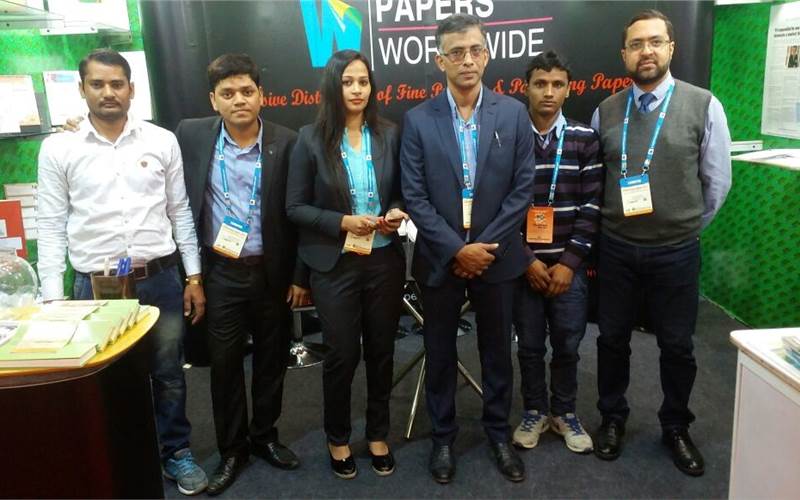The wind of a digital revolution at PrintPack '17
We, and for that matter, any organisation that participates in an exhibition does so with some expectation. From creating awareness among new and prospective customers to cementing relationships with an existing set of customers, exhibitions serve a number of purposes. When it comes to a specialised exhibition like PrintPack India, the opportunities are many.
15 Mar 2017 | By Print Week India News Desk
Such exhibitions offer a focused set of visitors – those who are aware and are also interested in learning. These visitors are experts in their domains, with years of experience, making for interesting and insightful exchanges between the exhibitor and visitors. There are also visitors who come with the intention of understanding what is on offer, and if convinced giving the product a try.
PrintPack 2017 ticked all the right boxes for us at Papers Worldwide. Our stall attracted around 1,500 new and unique visitors.
These are the people who know about the generic product in our portfolio (fine paper) but not specifically about us and our range of papers. Papers Worldwide has five offices in India and we count ourselves as one of the few fine paper suppliers with a pan-India presence. Even for us, it was satisfying to engage with visitors from places as diverse as Karnal, Kadapa, Kolhapur, Kolkata and Kurukshetra, in addition to 31 other locations.
We had maximum visitors from North India. Total 39% of the visitors came from West India; 11% from East India and 9% from the Southern states.
The following are some of the key insights we gained during the five days of the show:
There is a digital print revolution happening (digital ki kranti in the words of a printer from MP) across the country. A printer from Bidar in Karnataka mentioned that in the North Karnataka districts of Bijapur, Gulbarga and Bidar alone, an estimated 300 new digital machines have been installed in the last two years. The same story was told by printers from all over. Chhattisgarh and Odisha seem to be states where the impact has been the maximum.
The millennials are consuming less paper; the little they are using are of high quality. Stories of students using fine paper to submit projects as well as love letters and proposal cards came from the unlikeliest of places. It makes sense when you connect the dots, students have disposable cash as well as the need to stand out – paper is a differentiator.
Smaller cities pay a premium. Demand exists outside of the metro cities. A printer in Vizag told me how they charge a floor rate Rs 30 for a single side colour print in digital sheets of 13x19-inches. Contrast this to rates of Rs 7 and 10 that we see across Delhi.
The emphasis has shifted to post-press production. From the high-end machines displayed by Scodix and MGI to the local versions, we saw a lot of focus on post-press finishing. Printing, embossing, ultra-violet effect and foiling in a single pass open up possibilities that boggle the mind. This kind of development would be ominous for a traditional offset printer who will just not be able to deliver the results as quickly and consistently as somebody with such high end equipment. From a paper merchant’s perspective, I am not sure how this would translate for us. Would paper quality matter when the machine is the star? I think we will have to wait and see.
Information Technology is in demand. ERP vendors, online billing software, cloud-based costing solutions, hosting sites where printers can create online shops were all visible during the show. This makes logical sense when we factor the pressure on margins as well as the entry of a new generation in the business.
Synergistic partnerships will emerge. This one is not new. After all, we see M&A in other business sectors that mature. Synergistic partnerships can happen both permanently as well as one-off transactions. The options are many. If ITC can use its tobacco network to sell biscuits then why can’t a digital machine dealer use theirs to promote paper? Printers can combine with designers to create value-added creations. Post-press equipment specialists can combine with printers to create products. They can combine with online retail platforms to create a marketplace. The opportunities are many and these will take shape as the community will adapt with time.













 See All
See All